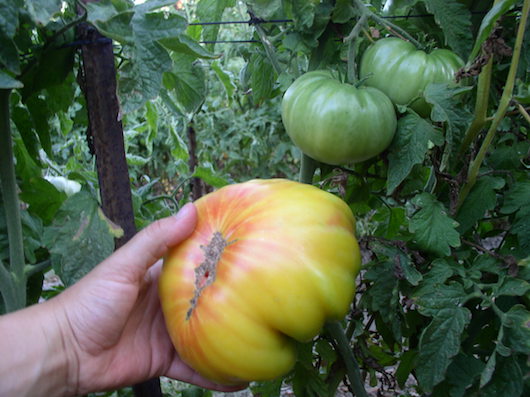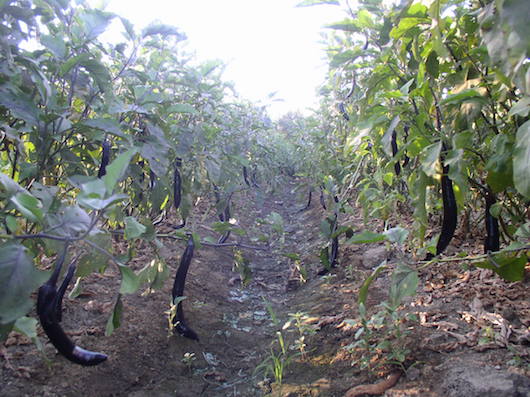
Years ago I had the opportunity to learn something about farming in California’s Central Valley, specifically, a little bit about water politics and policy. I was poking around in Water Districts and County government offices of Kern, Fresno and Kings counties, looking at documents that allowed me to map farm land ownership, and overlay that with data about who was actually farming the land. Many times the farmer is not the owner of the farm land and a number of large “operating” companies manage large tracts of land in the Central Valley.
The location of farms in California is described in many official documents, using townships (a 6-mile square) and sections (1-square mile or 640-acres), a logical surveying system created in 1785 when the US government was dividing up and selling off land where tribes of American Indians had lived for centuries. Most of California’s Mexican Land Grants weren’t easily described by the rectangular system, but it’s use continues today. This system of surveying land was supposedly first proposed by Thomas Jefferson and associated with his philosophy of the ‘family farmer’ as the rightful settler of the young country.
In a way, it was that Jeffersonian family farmer that I was searching for in the Central Valley — the farm that raised children, kept a few cows and pigs, grew a diverse garden, and lived on the land that they farmed. That family farm, ever since Thomas Jefferson wrote about its significance, has been the supposed beneficiary of public investments in infrastructure (like the aqueducts that deliver subsidized water), market supports and insurance assistance.
All those years ago, during my research, I was also trying to make sense of the tides of opinion about agriculture. At a meeting of an environmental group, that I attended in a beautiful house outside of L.A., Marc Reisner, author of the wonderful book Cadillac Dessert, was asked what he thought we should do about all the “huge” farms in Kern County sucking up California’s water. Marc Reisner was a charming man, but his answer was shocking. “Sometimes I think we should line them all up and shoot them!” This was just meant as hyperbole, but it has come to represent for me the lack of depth in the public’s understanding of California agriculture. A lot of people believed then that agriculture was simply a monolithic force wreaking havoc upon the environment.
A little later, I was talking with Ralph Abascal about my research. Ralph was a pioneering lawyer who won landmark Supreme Court decisions on behalf of farm workers, welfare recipients and undocumented immigrants. Ralph died in 1997, 3 years before Marc Reisner. Ralph and I were talking about the water subsidies being given in the name of the 160-acre-sized family farm, to 3- and 4-thousand acre farming operations in the Central Valley. Ralph got to the heart of the contradictions in our mythologies of the family farm and suggested that I go to the planning agencies in the counties where my research was focused and find out how many permits had been pulled in the last ten years to build houses on the farms. He knew quite well that the only people living right near the farms were the farm workers, not the farm owners.
California’s ‘family farm’ has changed a lot since the days when we drained massive wetlands to develop them for agriculture and when homesteaders rushed to claim western territories. The threads that make up this enduring myth – a deep emotional connection to the farm land, the ability to transfer land within the family, farm animals grazing next to farm fields, and children playing in the packing shed while work activities go on around them – those threads are a romanticized version of reality, but they are also very much alive and well on some farms in the state.
Full Belly straddles several different regulatory domains, and in the balance, we have realized that the contradictions in the public view of a family farm are reflected in the behavior of various regulatory agencies. Department of Labor, Occupational Health and Safety, Water Resources Control Board, County Environmental Services — each of these agencies has its own operating structure in place around the construct of what a farm is and how it should be operated. The regulations themselves can have a surprisingly big role in determining which kinds of farms operate with less effort. Thomas Jefferson may have had an outsized role in shaping our ideas of the family farm – and the US farm bill and other regulations still reflect the Homesteader days – but with each new generation, new layers of regulation and public oversight develop. It’s an erratic and unsustainable accretion of expectations and requirements.
As the ecological crisis deepens and agricultural assets are increasingly concentrated into fewer and fewer hands, it is an open question if the diversified ‘family farm’ model can survive side by side with farms that prize efficiency over all and view farmland as a commodity to be bought and sold. Some farms will have to paddle faster and faster just to stay afloat. Others will continue to streamline and thus survive the chaos and stress caused by factors beyond control. We know young farmers up and down the state that are proving it can be done, and done well, but for this family farm movement to grow, the public must decide it has value. In a state as urbanized as California, this is going to be a heavy lift (as they say in Sacramento), and a hard row to hoe (as they say down on the farm).
—Judith Redmond


Beautiful place settings for our Farm Dinner last Saturday.
